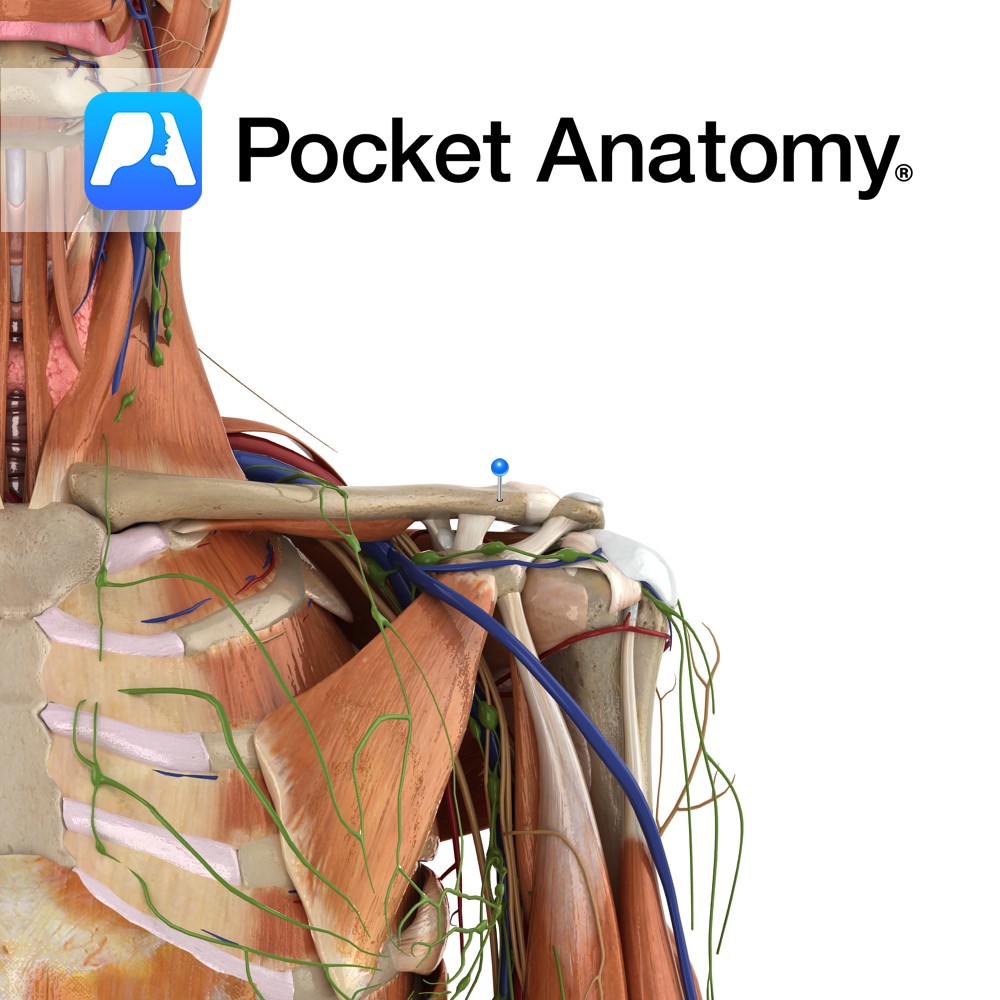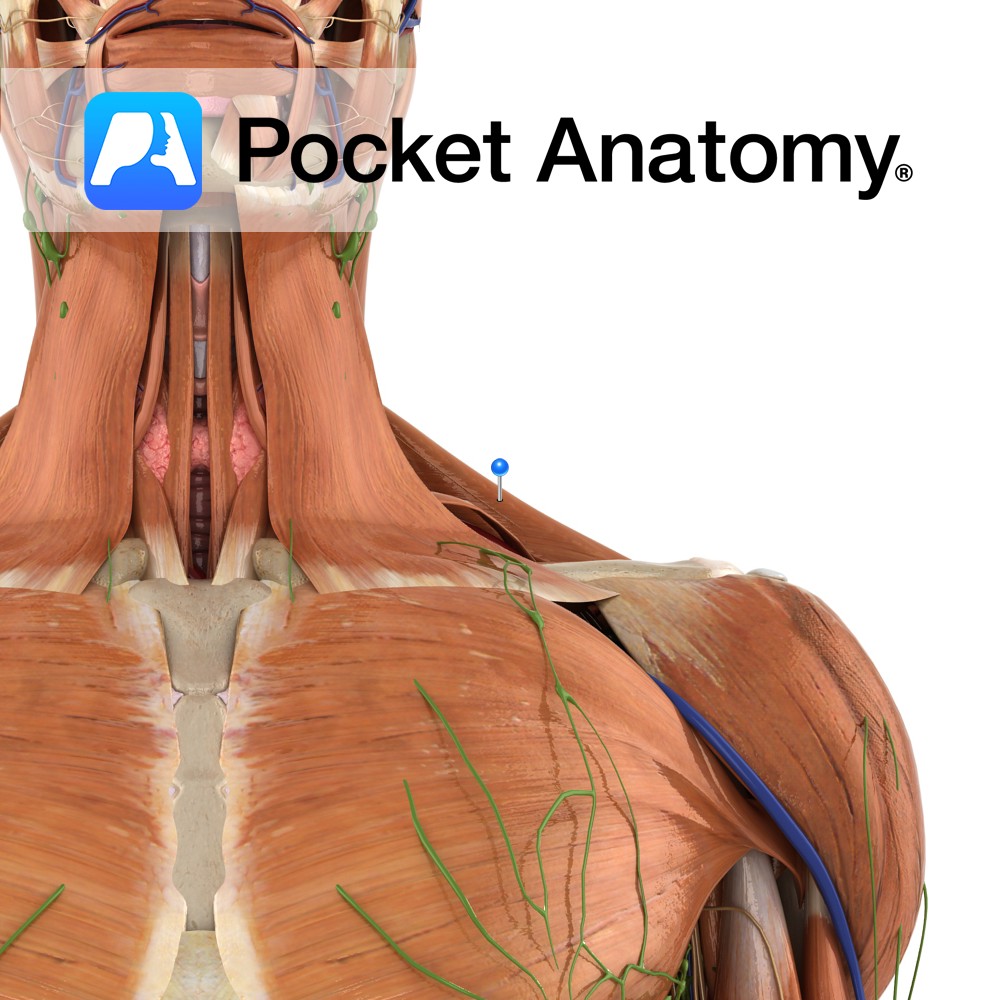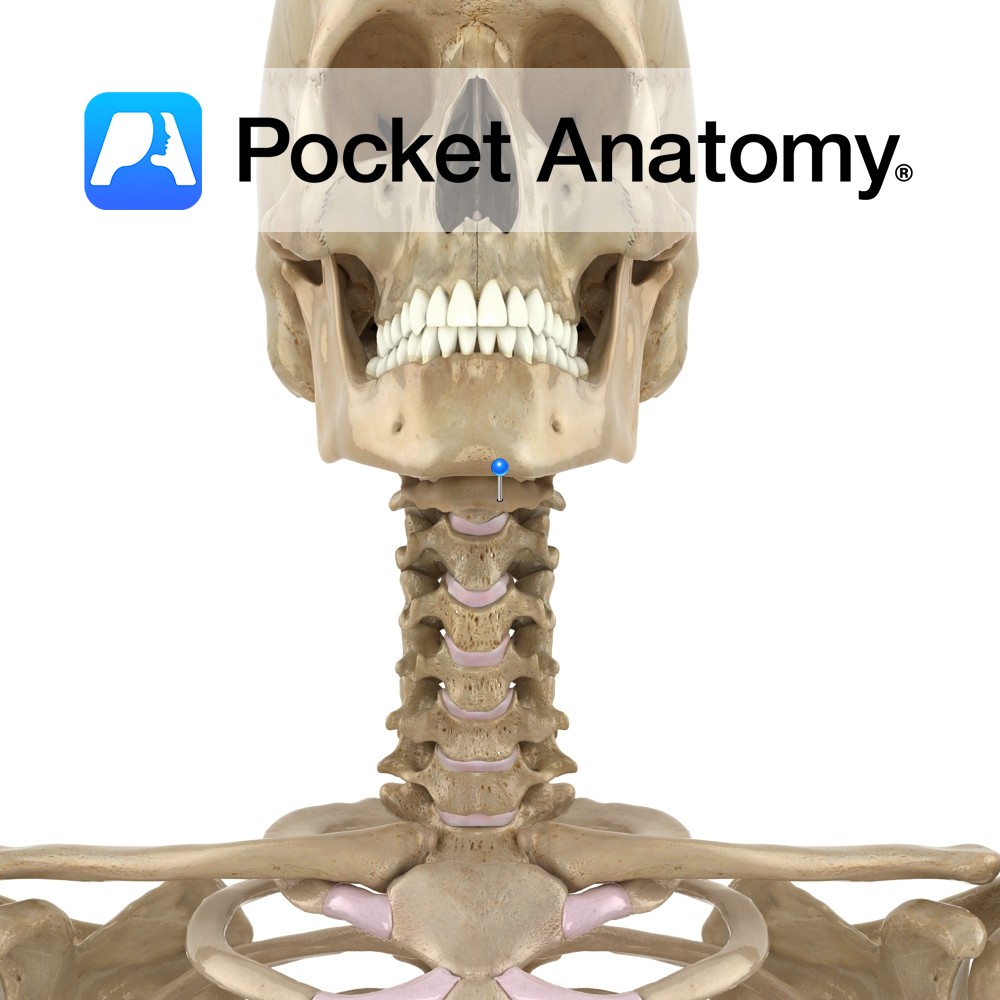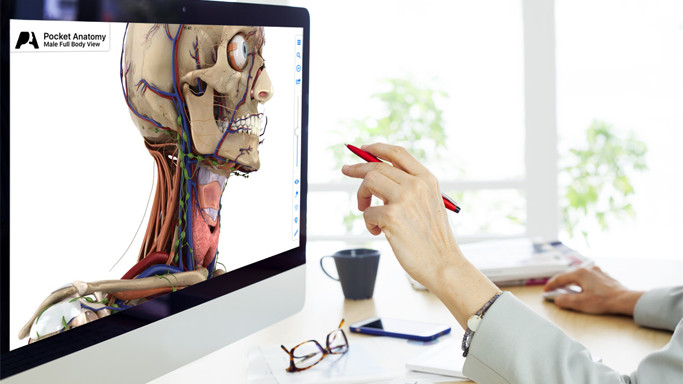PocketAnatomy® is a registered brand name owned by © eMedia Interactive Ltd, 2009-2022.
iPhone, iPad, iPad Pro and Mac are trademarks of Apple Inc., registered in the U.S. and other countries. App Store is a service mark of Apple Inc.
Motion The acromioclavicular joint is classified as a multiaxial synovial plane joint but it is more helpful to think of it as a pivot point. As the name suggests it is the articulation of the acromion of the scapula with the clavicle. It allows you to raise your arms above your head i.e. scapular elevation
- Published in Pocket Anatomy Pins, Teaching Anatomy
Anatomy Origin: Superior nuchal line of the occipital bone, external occipital protuberance, ligamentum nuchae and spinous processes of C7 to T12. Insertion: Superior fibres: posterior border of the lateral third of the clavicle. Middle fibres: medial border of the acromion and the superior edge of the spine of the scapula. Inferior fibres: tubercle of the
- Published in Pocket Anatomy Pins, Teaching Anatomy
Anatomy Lingual bone, U-shaped, in front of neck, between larynx (behind) and mandible (in front), at level of C3; made up of body (transverse), greater horns/cornus (long, pointing back), lesser cornus/horns (short, pointing up); suspended from tips of styloid processes of mandible by ligaments (this syndesmotic connection being its only bony articulation); anchored by multiple
- Published in Pocket Anatomy Pins, Teaching Anatomy
Anatomy The most inferior part of the laryngeal cartilages and completely encircles the trachea. It is shaped like a signet ring with a broad lamina of cricoid cartilage posteriorly and a much slimmer arch of cartilage anteriorly completing the circle. The lamina has two depressions separated by a vertical ridge. There are two articular facets
- Published in Pocket Anatomy Pins, Teaching Anatomy
March is the month we are joining the many global awareness campaigns for both workplace eye wellness and vision safety. While much of health messaging is focused on the “big” problems, such as heart disease and cancer, it’s important to remember that maintaining the “smaller” parts of our anatomy is equally critical to our overall health
- Published in Health and Education, Main Blog
February is Heart Month. Countries around the world are observing February as “Heart Month” with a variety of awareness days and months. In the U.S., activities to highlight heart health include “Wear Red” (Go Red for Women) day, to remind us that women are at greater risk than men for heart disease: Five times more
- Published in Health and Education, Main Blog
Hello all and happy new year! With January being observed each year as National Winter Sports/Traumatic Brain Injury (TBI) Month in the U.S., we thought we’d focus our attention to the topic of concussion, and try to increase awareness and patient education on the many traumatic brain injuries (including concussion) caused by participation in sports each
- Published in Health and Education, Main Blog
Health Literacy: when I was caring for patients in clinical practice, I spent time teaching them about their bodies, the conditions that brought them for care, and reviewing the results of any laboratory tests that had been done, as well as discussing the medications that had been prescribed. In each of these situations, I relied
- Published in Main Blog, Teaching Anatomy
Learning Anatomy: the human body is an exciting frontier to explore—from the first time you outline your body on paper in kindergarten to see how all the parts fit together; to middle school when you learn how stomach acids work to digest food; to high school when you’ve broken your arm playing football; to college
- Published in Main Blog, Teaching Anatomy
Pocket Anatomy has won the “Boost” StartUp competition at The Next Web (TNW) Conference in Amsterdam. The event is one of Europe’s top tech gatherings and was attended by over 2,500 influential web, technology and business leaders from all over the world. Nearly a hundred StartUps were selected for Boost, out of which 10 (including
- Published in Awards









